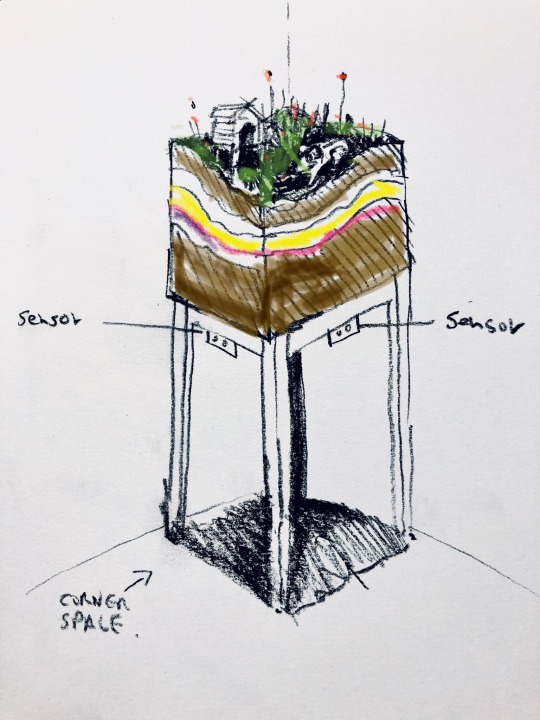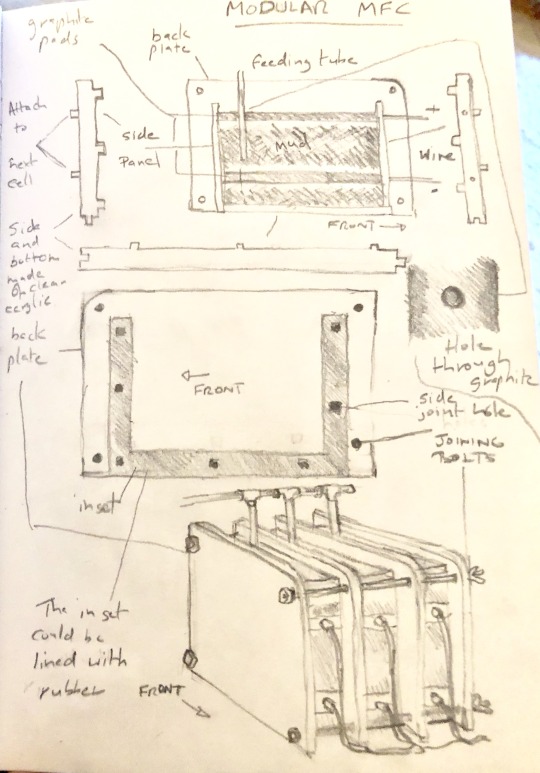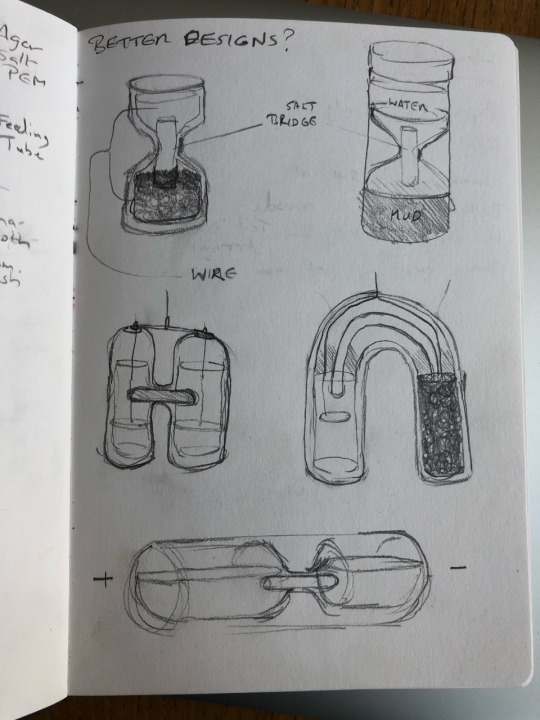Text

This is an experiment to develop a bioplastic shell for my robot.
I started off looking at zoomorph forms. I was inspired by boli figures from Mali.

I like the way that they are reminiscent of various animals but are not particular to one species. They are an archetype of various land based mammals. I did a number of sketches of these figures and came up with my own.

I then created a mold using super sculpey clay that I then baked in the oven.

Then used this as a mold to paint the bioplastic on to. I have experimented with a number of different colour using both natural colours - chilli and turmeric as well as sugar flair natural food dyes.
But I particularly like the way the top on has come out. It has elements of both a land creature and a sea creature like a Portuguese Man ‘o’ War.

0 notes
Text
The worlds first bioplastic robot dog!

Made using Agar, Glycerol and water. It has taken me about 20 attempts to get the method right.
0 notes
Text
First experiment with creating a 3 function robot using only the ATTiny85 micro processor.
I am utilising 3 pins to power different elements. 2 LED’s and a vibration pad. It’s not exactly amazing but a good test of the potential to miniaturise the elements and to keep it to a low voltage device. This uses only 2 AA batteries.

0 notes
Text
New modular MFC design
I have spent some time designing a prototype MFC which has a lot in common with the inside of a car battery or a server stack. The idea is to create multiple individual cells that can be added to or removed from the whole. So it can scale up bit still be a single unit.



0 notes
Text
Generating 1 volt
My series of 3 MFC’s is generating 1 volt of electricity and passing a current of 33 milliamps. Woohoo!


Almost enough to charge a single AA battery.
0 notes
Text
Increasing Power
I’ve just got back to London and I was looking at ways to create an MFC from my surroundings, now that I am back in the urban environment. I discovered a method that was simpler than the 2 chamber method. It uses a single chamber and the cathode rather than being submerged in water is simply placed on top of the mud with the top side exposed to the air.
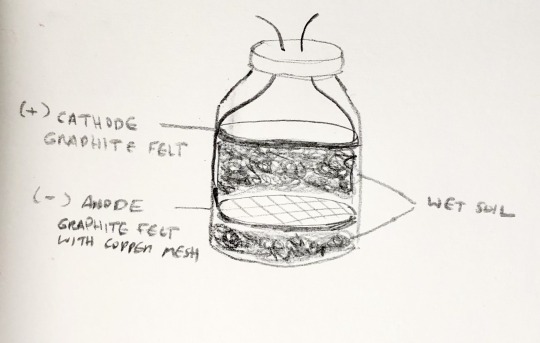
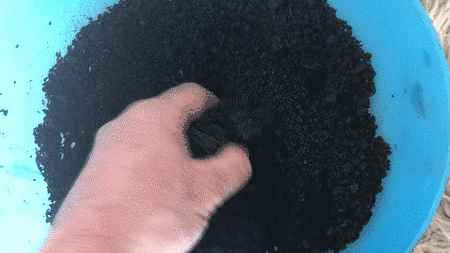
I also read you could use soil from the garden which is mixed with a little bit of water. I collected some from our shared garden. Both me and my partner have been developing the soil over a few years, adding our own compost and breaking down the clay so it’s developed into quite good soil.
I used an old container for peppercorns for the chamber and used the graphite felt disks I developed which are encased in copper mesh.
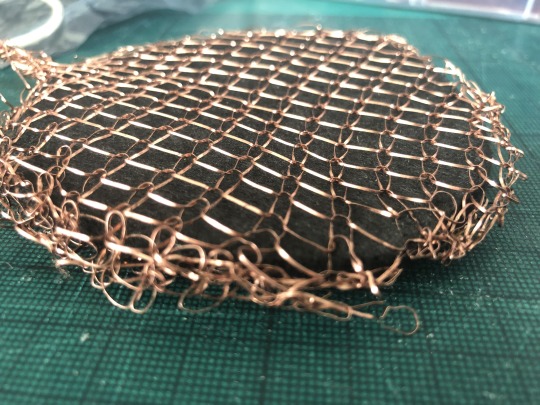
Once configured It started to produce 400+ millivolts straightaway. After a few days it was up to 800milivolts.

As an extension of the experiment I added some of my own urine to the chamber (12.5 ml) and the voltage output decreased.


However I later discovered that the wire to the anode had snapped. (perhaps corroded by the acid in the urine!) So the drop may have been as a result of this corrosion.
0 notes
Text
Filthy Power.
Power is pure filth. As I write my lungs are filling with diesel particulates from the smoke of a thousand micro fires in the engines of London’s cars, buses, vans and lorries. Down the walls and beneath my feet flows hundreds of litres of waste water, the shit and piss of millions of city humans. Somewhere out of site and out of mind multiple coal, oil and gas power stations burn stuff to make the writing of this missive possible.
The power I need, the power I desire is a messy business, yet the urban environment is stripped of the old signifiers of dirty power, Gone are the smoke stacks and gas tanks, the chimneys and coal holes. Even the hardware stores that supply the pipes and wires, the metal and tools, the providers of the conduits of mess have been squirrelled away into superstores on the edge of town.
Our city centres are gleaming monuments to digital power and our high streets are in thrall to food outlets* We interact with our shiny screens while drinking a coffee, eating a croissant or snaffling a burger. We lure power and resources to our nests and then we eat, hack, burn and excrete them. Our increasingly urban lives demand our continuous consumption of energy to fuel ours and, by extension, everyone else’s ingress to the heart of the cosmopolis. We feast on each other’s efforts and still we’re not full.
Liquid cooled server racks wink constantly, acknowledging another addition to my bloated photo stream. Powerful machine learning burns through carbon to to sift through images and communications to validate my digital labour but the muck of this orgiastic excess is barely visible. Only the silent glutinous fat beasts that lie in wait beneath our feet blocking our sewers and the shimmering heat haze genies venting from distant server farms bear testament to our fast food, fast information world.
Tech companies sell a gleaming future, glimpsed through sterile touch screen windows. A vision of perfection experienced through infinitely reflecting surfaces. Odourless optimised living where every human problem is a user journey to a happy ending.
When I order a pizza an animation appears on my screen - a delivery operative speeding my food to my door, emitting pixel smoke from their moped. It’s a facsimile of dirt, an avatar of the effort made to meet my desire. Outside on the streets real two wheel combustion engines are jostling with each other to deliver food units to all the screen gazing lazy diners. Behind every post industrial facade lies the truth of what powers us. Every swipe or double tap belies the reality of stink and begrimed input and output.
Our world of diminishing returns demands a reacquaintance with these separate universes. The subterranean Morlock muck must smear her dirty hands upon the smart devices of the Eloi. If we are to design better technologies we should not neglect the abundant filth that gushes from us. We must design to incorporate grunge into our daily interaction with machines. Beyond the reasonable fear of infection from our waste products lies a fruitful alliance. Inside the effluent we choose to ignore lies the seeds for a virtuous circle of knowledge and power. From the by-product of human sustenance is a steady electron flow available to micro processors. The dung bot is slowly pushing its Sisyphean shit ball towards us, heralding the future of machine power.
*A study by the department of energy and climate change in the UK shows domestic energy use by consumer electronics increased by 77% and home computing by 409% since 1990. In parallel the UK has also seen a 34% increase in fast food outlets on the high street from 2010 to 2018 according to the ONS.
0 notes
Text
Oozing biological power
My batteries are now at their most productive and the anode looks particularly abundant with rich fetid processes.
Below you can see the hole where the electrode has been removed.

0 notes
Text
Super Conductors
Based on my previous experiences making batteries I became aware that conductivity was a big issue. The amounts of electricity to be harvested are small so the way to maximise collection of the electricity is to design better electrodes. I noticed in a previous experiment that is the metal in the entire battery is the same, for example all copper or all aluminium in both the wiring and the anodes themselves the power output increased considerably as result I have been creating better instruments.
I recently took delivery of some graphite carbon felt that I found on eBay which is used as insulation for incinerators or at least that is the listed purpose for the sheets I ordered. The sheets are the colour of pencil lead and they have the feel of kitchen scourers. They have a furry felty quality and I’ve discovered if they are handled for any length of time, they seem to irritate the skin. I presume this is because of the tiny carbon fibres they are made of. The sheets are about 5mm thick.
I tested the conductivity of the sheets and there seems to be only 1-2 millivolt loss in conductivity.
I have made round electrodes by cutting out the felt and inserting the bare copper wire down through the length of the entire circular pad.

As an additional conductive layer I have wrapped the pad in copper mesh and secured it around the last bare part of the copper wire.
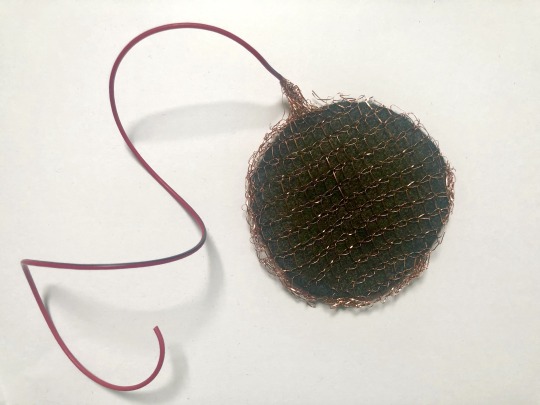
My hope is that there is now a good substrate for collecting electron producing bacteria, with lots of dense fibres that are interwoven that should create a large surface area for electrical activity to occur and by wrapping the carbon in copper there are more ways that the electric current can be transferred to the cable.
0 notes
Text
The Brains of the Robot
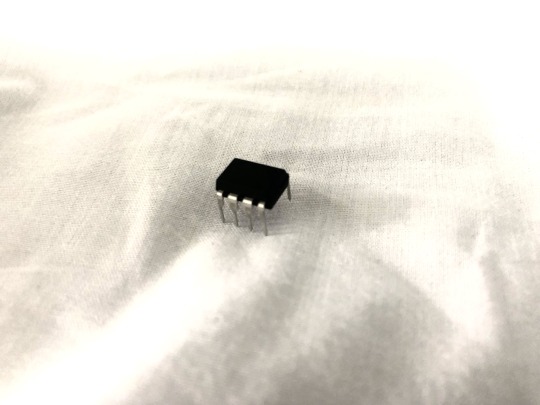
So today I have been experimenting miniaturising my planned robot. I realised that I would need to keep the processor or brains of my machine small so the robot would be autonomous of the Arduino Uno or a computer as these would require too much power. I discovered that I could use an Arduino to program a microchip. In this case I am using a ATtiny85 chip, they are small, about 8mm x 9mm and they can contain the program that will control the robot. I have uploaded a simple blinking LED program to test the chip and then, as you can see below, I then disconnected the Arduino and powered the chip using 2 AA rechargeable batteries.

I further simplified the circuit with less jumpers so it fits on a smaller breadboard.

0 notes
Text
Bad Conductors
I have rewired 2 of the batteries with only copper wire and only copper electrodes. I ordered some copper mesh to make it, apparently it’s intended use is as vermin control against rats and mice, weird.
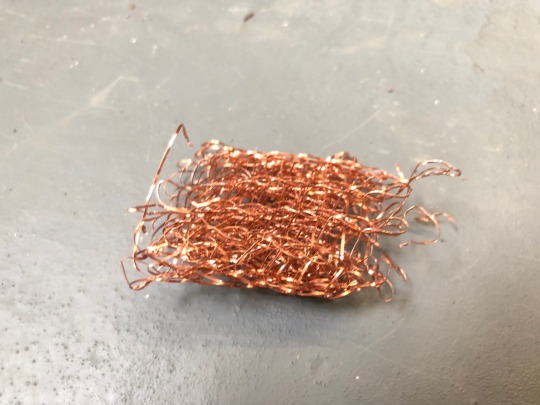

Anyway both batteries batteries have improved their output from 85-90 millivolts to 250+. I think that using the same wire throughout the system makes for much better conductivity.
I think combining that with a better carbon substrate may improve their output even more.
Now if I wire the 2 batteries together I get 520 millivolts. Half a volt. Which was my target.

0 notes
Text
Disarray and new thoughts
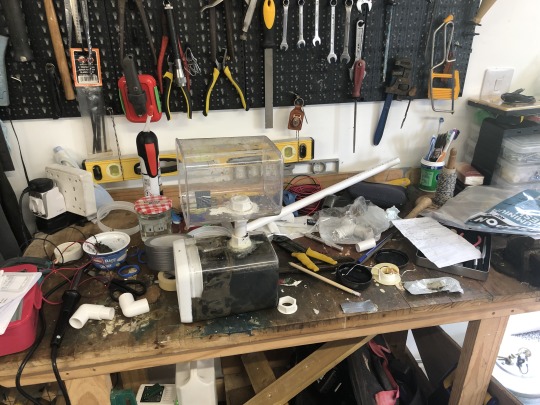
The output so far has been quite disappointing, and my brain feels as scrambled as the workshop (my Dad’s garage) has become.
After feeling quite pissed off about the lack of energy in my experiments compared to the efforts I have been putting in. I decided to wire all my batteries together in series and see what happened. As a result I now have the sum of all the batteries output, amounting to over 400millivolts. It’s a lot of batteries for a very small output but it has encouraged me to keep experimenting.

I started to see how this could work. A little robot surrounded by the power it needs to make it. Something that highlights both the possibility but also the futility of the experience. A robot on massive life support.
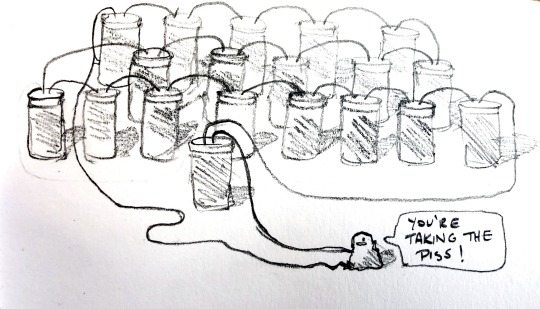
0 notes
Text
Different designs marginally better results
It’s quite frustrating I have now made over 5 different designs both in an attempt to improve output but also to streamline the design.
I felt that the single chamber battery was not effective enough, despite looking really simple and elegant. I did some more research and most of the other ‘maker’ versions of MFC’s were based on the 2 chamber principle with a connecting tube to allow the salt bridge connection to take place.
I started to think that perhaps I was just using some fairly unverified citizen science and so I looked for examples from more peer reviewed sources. I stumbled upon this example from Makezine which was written by someone who works at the Center for Nanotechnology at NASA and it seemed to chime with other accounts. So I built a number of MFC’s based on this principle:
Design 1

Design 2
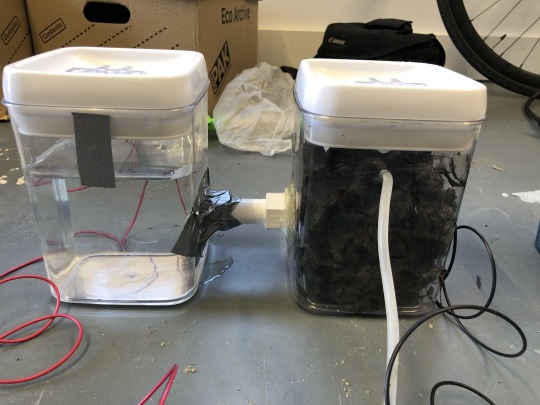
Design 3

The third version was a scaled down version and I thought this design would allow me to see if a smaller version produced a different output. It also used jam jars which a gave it a kind of domestic quality and I liked the form of it.
I also explored another way of doing it by adding a salt bridge u-bend that extends upwards and then across and downwards to the chambers, this enabled me to create them with glass jars where it would have been impossible to drill a hole for a horizontal bridge into the glass. I designed one small (I forgot to take a picture of the design and one larger version to see if there was any major difference.
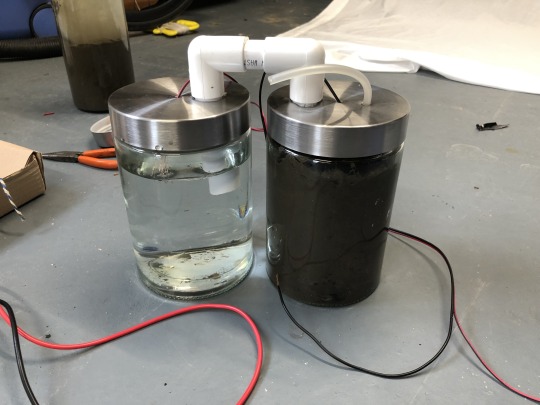
I still only seem to get up to about 200 millivolts even with the most high performing and this turned out be the ugliest - the one made of yoghurt pots. The others particularly the u-bend variety didn’t produce much power above 180 millivolts.
I became quite despondent. I wasn’t sure why other people were making claims of up to half a volt (500 millivolts) yet I was still only working at very low output.
I think I need to consider the design or source of key elements and their effect on the process:
1. The cathode and anode - perhaps the metals should be the same currently I am working with copper wire and yet I am using aluminium mesh as the receiver. I have ordered copper mesh to address this issue. I noticed that then I took the aluminium mesh off and just used the spread out filaments dipped into the water I got a spike in voltage.
2. Use a carbon fibre disk to create a wider area for the bacterial electricity.
3. Better seals on the jars, specifically the anode chamber.
4. Maybe the mud is not right.
5. The salt bridge is currently composed of an agar and salt jelly however I have seen other examples where a piece of natural fibre rope is used that is saturated in salt.
0 notes
